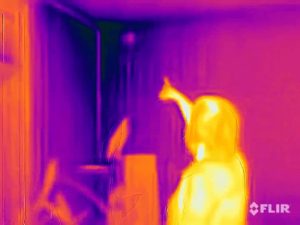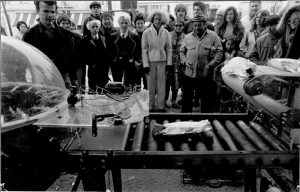Two pretty clever installations that use different technologies to create a stream of evanescing data over a wall:
El Muro, by Willy Sengewald & Richard The, is a project about walls, walls as artboards, as a medium, as object for agression and as object of meaning.
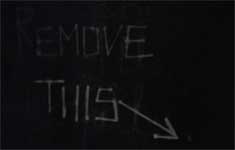
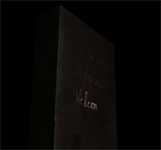
Situated right in the middle of a room (think of the monolith in 2001 Space Odyssey), El Muro repeats the statements written on it over and over again. They start fading as soon as they’ve been written, just like the political statements (ideas/utopias/protest) in the real world appear and fade after some time, and just like the way political graffiti work: people write them to adress the citizens of their city without even reaching them.
How it works:
Inside the wall is a Roland DPX-3300 plotter connected to a computer. With a soldering iron the plotter draws on a canvas which is layered with thermochromatic ink. The canvas is heated partially and changes its color. After the heat diminishes the color changes back to its original state.
With this alternative display it is possible to write words or draw simple illustrations. An interface was developed in processing to record the drawings of the cursor.
Video of El Muro.
The Temporary Printing Machine, one of the latest works by Random International, highlights the ephemeral quality of digital data. The installation functions as a big canvas onto which any kind of digital content can be “printed” out as a monochrome image. Images and text are not printed with ink, but with UV light onto a light reactive surface which allows the content to stay visible for about 45 seconds to 1 minute. The painting then fades away, leaving space for a new one immediately and creating an infinite stream of disappearing data.
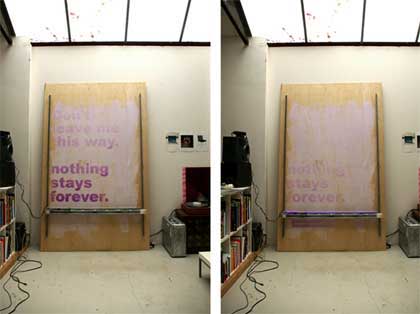 How it works:
How it works:
Connected via USB to an Apple Computer, the canvas can be fed live with any kind of digital, pixel based data. A specially developed software scans the data and feeds the information into a print-head that containins 256 UV Leds. This print-head continously travels over a photo-reactive canvas. The substrate reacts to the UV light with a drastic temporary colour change so that images and text are made visible for about one minute.
Video.
Further installations are planned where the same technology will be used to print onto 3D substrates, so that entire objects, rooms and environments can be turned into temporary displays.
More works by Random International: Digital lamp shades and Pendant Lights, the Paper Clock. Oh, yeah! and the Pixel Roller!

